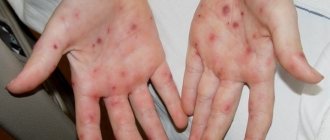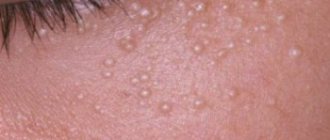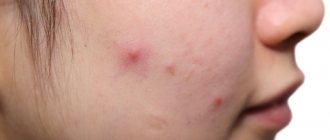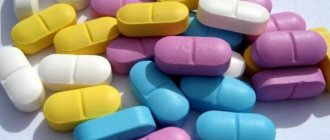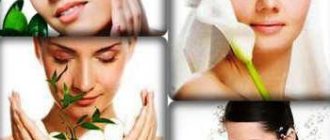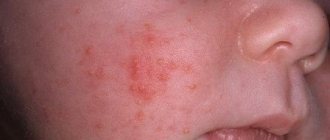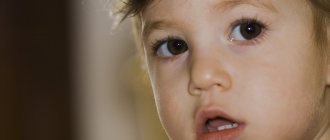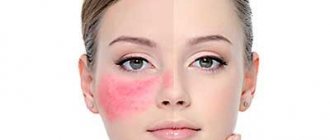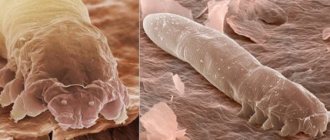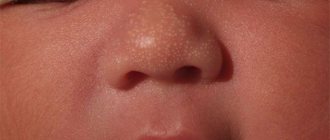Skin is a reflection of a person’s overall health. The most unpleasant types of dermatological pathologies on the face include purulent acne. They not only worsen the appearance, but also bring a lot of discomfort. Such acne causes pain and itching, and it is almost impossible to disguise them with foundation. Yes, this is not recommended. Decorative cosmetics contribute to the spread of infection.
Purulent acne on the face requires a special approach. If extensive rashes appear, you should seek help from a dermatologist.
What determines the hormonal background of the body?
Many organs of the human body are responsible for the production of hormones:
- cortex;
- hypothalamus;
- adrenal glands;
- endocrine glands;
- ovaries (in women) and others.
Disturbances in the natural functioning of any of them can provoke an imbalance of hormones, which can cause acne. In almost half of the cases (45%), its development in adults is a symptom of a disorder of the endocrine system.
The main hormones that influence the appearance of acne are:
- testosterone;
- dehydrotestosterone;
- dehydroepiandrosterone;
- insulin-like growth factor-1.
In some cases, fluctuations in hormonal levels in the body are completely natural.
They necessarily occur during the period:
- puberty;
- pregnancy and lactation;
- menopause and menstrual cycle;
- use of certain medications, in particular hormonal contraceptives.
Hormones and rashes: what is the relationship?
So common in adolescence and early adolescence, hormonal acne causes a sharp surge in the body’s hormonal activity, which occurs due to its rapid growth. This period in the life of every person, regardless of his gender, is characterized by the active production of steroid hormones, especially androgens, which are often called male sex hormones. Under their influence, profuse rashes appear on the skin.
Thanks to steroid hormones, complex biochemical reactions occurring in the cells of the skin become possible. But the flip side of these necessary processes is an increase in the number of secretory cells (sebocytes) in the sebaceous glands, which provoke increased sebum secretion.
At normal hormone levels, this substance is characterized by a thin consistency. If there are a lot of androgens, then the secretion secreted by the sebaceous glands acquires viscosity and density. It clogs the ducts and forms a kind of plug, due to which excess sebum and other products of the sebaceous glands cannot come out. Thus, a favorable environment is created for propionic acne bacteria, whose active reproduction leads to inflammatory processes in the skin and the appearance of acne, especially often occurring on the back. At the site of blockage of the duct, a microcomedone is first formed, from which a closed or open comedone can then form.
Sweets and acne: myths or reality?
There is an opinion that eating a lot of sweets has a negative effect on the skin, causing rashes. And it is not at all unfounded. When it enters the body, sugar is broken down, providing it with the necessary energy. This process occurs with the direct participation of the pancreatic hormone (insulin).
In order for its level in the blood to decrease, the process of converting complex carbohydrates into fats begins. Their content in the body increases significantly, activating the activity of the sebaceous glands. Because of this, sebum production increases, the ducts become clogged, creating favorable conditions for the development of inflammation, that is, all the prerequisites for the formation of acne on the face, back, and body are formed.
Hyperkeratosis
The essence of the disease is excessive cell division, as a result of which the skin layer thickens. Red pustules form on the face, which are not corrected by decorative cosmetics. The skin peels and the appearance of the face deteriorates. The patient also suffers from itching and other discomfort.
Hyperkeratosis can be congenital or acquired; they also include:
- Follicular hyperkeratosis - hair follicles are affected, the ducts become clogged, and inflammatory processes occur.
- Lenticular is a chronic form of the disease, which worsens after prolonged sun exposure.
- Disseminated - very rare.
Hyperkeratosis is not considered as an independent disease; it is often a clinical sign of various pathologies, but sometimes external factors can be the causes of hyperkeratosis, for example, the following:
As for internal reasons, they are as follows:
Hormonal imbalance in newborns
Even very tiny babies can develop acne due to a disruption in the natural balance of hormones. It is not uncommon for a child to be born with skin covered in rashes. They can also occur in babies two or three days old, but most often children aged 1-2 months suffer from hormonal rashes. The most common cause of such manifestations is a hormonal crisis caused by excess estrogen (the female sex hormone). Produced in a woman's ovaries and pituitary gland, it enters the baby's blood through the placenta.
If this happens, the appearance of your baby's skin becomes similar to the acne-covered skin of a teenager. And if it is dry, it may experience slight flaking. As a rule, such symptoms reach their maximum intensity around the age of three weeks, then they decline and after 1-1.5 months the baby’s skin is completely cleared of acne on its own. If this has not happened by the age of 3 months, you should consult a doctor to prescribe a healing ointment.
Such a rash does not indicate an allergic reaction or infection; it is influenced by the hormonal processes occurring in the baby’s body, so it does not require specific therapy.
Due to the absence of comedones (clogged pores) in pimples, they rarely fester. Most often, treatment of hormonal rashes in infancy is based on careful adherence to skin care rules: daily water procedures using boiled water. When breastfeeding a child naturally, the mother does not need to change her usual diet.
You should not resort to self-medication, especially using ointments containing hormones, antibiotics and alcohol-containing products. If an incomprehensible rash, and even more so ulcers, appears on the face, back or entire body of a newborn, it is better to consult a specialist. Such signs can indicate not only a hormonal imbalance, but also much more serious problems with the baby’s health.
Examination and treatment methods
For acne on the neck in women, the causes are very different, so a comprehensive examination will be required. You will need:
- histological analysis;
- dermatoscopy;
- analysis for the presence of mites of the genus Demodex;
- general and biochemical blood tests;
- study of hormonal levels;
- allergy tests.
For neck rashes, the causes are important for subsequent treatment. If pimples behind the ear and in the neck area occur as a result of a cold, then specific therapy is not carried out. You need to remain calm, avoid hypothermia and take vitamins. Cold pimples are not dangerous. Antiviral drugs are indicated for influenza and ARVI. If pimples on the neck have formed due to acne, then external and systemic treatment is carried out.
Antibacterial ointments, medications based on benzoyl peroxide and azelaic acid, as well as retinoids are used. Treatment with drugs such as Differin, Skinoren, Baziron and Klenzit gives excellent results. If a pimple appears like a boil and it hurts, then in the absence of complications, only local medications are used.
In the maturation phase, dry heat and dressings with ichthyol ointment are indicated. To facilitate the opening of the boil, enzymes and salicylic acid are prescribed. After the pus comes out, healing and antibacterial agents are applied. If multiple boils appear on the neck, then systemic antibiotics are indicated.
Treatment of lice is carried out with antiparasitic drugs Nyx and Para Plus. Clothing must be processed. If acne appears on the neck against the background of dermatitis, then antihistamines are prescribed. Treatment involves avoiding contact with allergens. Thus, the male and female body can be exposed to various unfavorable factors that lead to the appearance of exanthema on the neck.
Pimples filled with purulent fluid are one of the most common problems found on human skin. This is not only a cosmetic, but also a physical defect that must be treated. Ulcers on the face can appear for a variety of reasons. The method of therapy directly depends on this.
What should not be done if hormonal rashes appear?
If rashes appear on the skin of the face or back, first of all, you need to limit external irritants, providing the affected epidermis with rest and peace. It is worth postponing going to the bathhouse or sauna; you should not be in direct sunlight (sunbathing) for a long time, since under the influence of high temperature an exacerbation of the pathology may occur.
Under no circumstances should you squeeze pimples. Firstly, there is a very high risk of introducing an infection into an open wound and causing even greater inflammation. Secondly, the mechanical impact on the rash results in unsightly scars, which will require a lot of effort to eliminate in the future. It is better to use cosmetics for deep cleansing of the skin (masks, gels).
As preventive measures for hormonal imbalance, doctors recommend normalizing nutrition and maintaining skin hygiene. You need to take care of it daily using suitable cosmetics. Taking vitamin supplements will also help keep your skin healthy and maintain its beauty.
To get rid of hormonal acne, you will need time and patience. The difficulty in treating the pathology lies in the fact that the rash is only the tip of the iceberg, the visible part of the problem. If their direct cause (hormone imbalance) is not eliminated, then the improvements in skin condition on the face, back and entire body obtained during therapy will be only temporary. In some cases (with polycystic ovary syndrome, pathology of the adrenal glands), even surgical intervention may be indicated to solve the problem. It is for this reason that healing from the disease should take place under the supervision of a specialist.
Acne appears when the sebaceous glands malfunction. Blockage of the ducts leads to the development of an inflammatory process and purulent acne. Most often, the pathology affects young people in adolescence, but sometimes occurs after 30 years of age due to imbalance of hormones. The cause of acne on the face in women can be seborrhea, taking hormonal medications, diseases of the reproductive system, or incorrectly selected cosmetics.
Pathology can be of varying severity:
- The mild form is characterized by the appearance of a small amount of acne without signs of inflammation.
- With an average degree, the rash forms on the face in 10-40 elements.
- The severe stage is characterized by the appearance of purulent acne on the face and body.
Treatment is prescribed by a dermatologist; you may need to consult a gynecologist or endocrinologist. For initial stage therapy, external creams, gels or lotions containing alcohol, antibacterial and anti-inflammatory components are used. If a purulent rash appears, antibiotics are additionally indicated.
The most effective external agents include:
1. Retin A cream is made on the basis of retinoic acid, which is a form of vitamin A. The drug is prescribed for the treatment of acne in women of different ages, eliminating comedones, post-acne, and smoothing skin texture. Active components normalize the functioning of the sebaceous glands, dissolve blackheads, accelerate cell regeneration, stimulate collagen production, have a lifting effect, and improve complexion. In women after forty years, wrinkles are smoothed out, the skin is tightened, becomes elastic, and the pores are narrowed.
After the start of therapy, the number of acne may increase, this is due to the maturation of internal acne. The first improvements will be noticeable only after a month; the entire course of treatment lasts 36 weeks.
2. You can treat acne on the back and face using Skinoren gel or cream. The drug contains azelaic acid, which normalizes the desquamation of the epithelium, preventing the formation of comedones. Suppresses the proliferation of pathogenic microorganisms, lightens skin pigmentation at the site of healed acne. Skinoren is indicated for use in the treatment of facial acne in adults and adolescents, results are noticeable after 3-4 weeks of therapy.
3. Indoxyl gel helps get rid of acne on the face of women. It is made from benzoyl peroxide and the antibiotic clindamycin. A remedy is prescribed for the treatment of mild to moderate acne, including those with purulent elements. The active ingredients relieve inflammation by eliminating pathogenic bacteria, cleanse pores and improve complexion. The course lasts 2–5 weeks.
A dermatologist should select medications for the treatment of acne; improper use of gels or creams causes irritation, peeling of the skin, allergic reactions, and bacterial resistance to antibiotics.
Acne treatment
Medications, cosmetic procedures and traditional medicine will help get rid of purulent acne on the face. But in any case, you must first consult with a specialist.
Skin preparation
Before starting treatment procedures, the skin must be prepared. Preparation consists of the following actions:
- Steam your face for 10 minutes over a container of herbal infusion, covered with a towel. This will help the pores expand, which increases the effectiveness of the medications.
- If the skin is not inflamed and there is no redness, you need to exfoliate your face once a week. For this purpose, you can use available means - ground oatmeal mixed with water, soda, sugar or coffee grounds.
To cleanse the skin, you can use homemade peeling: mix natural yogurt or kefir (2 tablespoons) with sugar (1 tablespoon) and the juice of half a lemon. Apply the product with massage movements to the affected area (except for the area around the eyes). Kefir has a moisturizing effect, lemon helps dissolve dead cells, and sugar effectively exfoliates the stratum corneum.
Upon completion of the procedure, you need to wash your face with warm water and rinse with the decoction remaining after steaming.
If your skin is oily, it is recommended to wash your face daily with tar soap. This is a natural antiseptic that has shown high effectiveness in combating skin problems.
The process of maturation of abscesses takes quite a long time, so it will not be possible to get rid of the problem in one day. As a rule, partial recovery occurs after 2-3 days, and complete recovery occurs after 1-3 weeks.
Pharmacy drugs
At the pharmacy you can purchase both special acne remedies and general medications used in the treatment of a number of diseases. Vishnevsky ointment is considered the most effective and safe medication. Although it smells unpleasant, it can quickly draw out pus from abscesses and large boils.
A small amount of the product is applied to a cotton swab or sterile gauze folded in several layers, applied to the affected area and left overnight. In order not to stain the bed linen, you can cover the top with film (oilcloth). It is best to fix it with adhesive tape.
Other medications that are freely sold in pharmacies have a similar effect. In parallel with the destruction of pathogenic flora, such drugs relieve inflammation, dry out acne and prevent further spread of infection. Apply them directly to the pimple 2-3 times a day.
The most commonly used medications are:
- Metrogil;
- Erythromycin;
- Levomekol;
- ichthyol, zinc, syntomycin, salicylic ointments.
To disinfect the skin, you can use products based on zinc and erythromycin (Zinerit lotion). For large affected areas, treatment with the solution is carried out 3 times a day. The effect occurs within 14 days of continuous use.
You can remove a purulent pimple on the face using aspirin - crush the tablet into powder and dilute with boiled water. To treat multiple small acne, use Skinoren or Baziron AS gels. The product is applied 2 times a day. The course of therapy is at least three months.
Cosmetology procedures
A qualified cosmetologist will help eliminate the external manifestations of a purulent rash. But first you should consult with your doctor to identify the underlying disease. The salon can offer the following procedures:
- medium or superficial facial peeling using chemicals - removes dead skin flakes, activates the growth of healthy young cells;
- ultrasound treatment - allows you to stop inflammation, eliminate sebaceous blockages, narrow pores and stimulate local blood flow;
- vitamin masks based on essential oils, algae, clay - promote skin regeneration and improve its nutrition;
- cryotherapy - treatment with dry ice or liquid nitrogen;
- mechanical cleansing of the skin, which is carried out using special tools - blockages and pus are removed; at the end of the procedure, the specialist applies a healing ointment.
Home Remedies
You can speed up the process of pus release using an aloe compress. The leaf of the plant is cut off and washed thoroughly. Then you need to remove the skin from one side and apply the pulp to the affected area. You can secure it with a bandage or gauze bandage.
The following home remedies also have a good effect:
- Sagebrush. Prepare an infusion of herbs (2 tbsp) and boiling water (1 tbsp). Used for lotions.
- Mustard. The product is applied precisely 3 times a day. The duration of the procedure is 30 minutes.
- Plantain. The juice of the plant is wiped over the affected areas.
- St. John's wort. An alcohol infusion is prepared based on this plant: 1 part dry herb to 5 parts alcohol (40%). Acne is treated with the prepared product.
- Medicinal decoction. To prepare it, use calendula, hops, chamomile or St. John's wort (1 tbsp per glass of boiling water). You should wash your face with the prepared decoction every day.
If after the treatment there are red spots on the skin, there is no need to panic - they will disappear over time.
You can speed up the skin restoration process using a medicinal solution: add honey (1 tbsp) and calendula tincture (1 tsp) to boiled water. The product is used for daily treatment of the skin. Lotions from the same product have a similar effect, which must be applied to the affected area and kept for 20 minutes.
Purulent skin lesions never occur without a reason. Therefore, eliminating acne will not solve the problem as a whole. Regular acne and other skin growths indicate the development of some disease. In this case, you need to contact a specialist who will conduct an examination and determine why ulcers appear on the face. The reasons for adults can be different - from elementary neglect of hygiene rules to the development of pathological processes in the body.
If a pathology develops, it should first be cured, and only then the external cosmetic defect should be eliminated.
Drug treatment for acne
- Moderate and severe acne in women should be treated comprehensively using external remedies and antibacterial drugs. Erythromycin has high anti-inflammatory activity for purulent acne on the back, face and chest. The combined version with the addition of zinc Zinerit increases the effectiveness of therapy and prevents resistance of microorganisms.
- Doxycycline or Minocycline are most often prescribed for oral administration. They eliminate chronic inflammation and increase cellular immunity. The treatment is long-term, so it should be carried out under the supervision of a doctor.
- For women over 30 years of age who suffer from severe forms of acne on the face and body, if antibiotics are ineffective, it is recommended to take combined oral contraceptives or androgen drugs. These products normalize hormonal levels, reduce sebum secretion, and prevent the appearance of acne. Therapy lasts from 3 to 6 months.
- If this treatment regimen does not produce results, women with rashes of purulent, inflamed acne are prescribed Roaccutane of the retinoid group. This drug is indicated for severe forms of acne that are prone to scarring and the formation of abscesses that cannot be cured by other methods. The medicine accelerates tissue regeneration, suppresses the activity of the sebaceous glands, and has an antiseborrheic effect. The course of treatment lasts from 4 to 10 months. The dosage should be prescribed by a dermatologist; self-medication leads to the development of side effects.
Additional acne treatment methods
You can get rid of blackheads and rashes with the help of professional facial cleansing, which is carried out mechanically, vacuum or ultrasonic. Subcutaneous acne is eliminated using laser therapy, darsonvalization, and cauterization. Nodular formations on the surface of the skin are removed by cryodestruction, affecting the pathology with low temperature.
Effective salon procedures for acne in women include:
- chemical peeling;
- ozone therapy;
- pinch massage;
- dermabrasion.
Sebaceous gland cysts are surgically removed, but this procedure leaves scars. An alternative option is to inject the abscess with corticosteroid drugs.
Prevention of acne on the face and body
- The diet should be balanced, exclude fatty, smoked, salty and spicy foods from the diet. Eat more fresh fruits and vegetables, dairy products.
- If acne appears on your back, it is recommended to wear cotton underwear. Clothes should not be too tight; synthetic materials can also cause acne.
- If you have oily skin, wash with cool water and soap. You should not use cosmetics based on oils; they contribute to blockage of the ducts of the sebaceous glands and increase inflammation.
- In the presence of chronic diseases, treatment should be carried out promptly. One of the common causes of acne after 40 years, acne on the back in women is ovarian dysfunction during menopause. Regular preventive examination by a gynecologist will help identify pathology at an early stage.
- Acne on the back and rashes on the face and neck should be treated taking into account the cause and severity. A dermatologist should prescribe therapy. Good results are achieved by complex procedures, including external treatment of inflamed elements, antibiotics and salon cleaning.
Every girl cares about her appearance, but she pays special attention to her face. But often this beautiful face, for reasons unknown to anyone, is covered with a rash. But you can fight this rash.
The most common and serious mistake is to mask the rash by applying a rough layer of powder or, even worse, foundation. In fact, the first thing you need to do to eliminate a rash on the face is to identify the cause of its appearance and deal directly with this cause. As a rule, such a reason is hidden somewhere inside the body, so the most correct way to diagnose the cause of the rash is to consult a dermatologist.
Causes of rash on face
Rashes appear in the form of spots, blisters and pimples of various sizes and shades. They occur both on a certain part of the body - face, hands, and throughout the body. But we must remember that a rash is not an independent disease, but only one of the signs of the disease.
The causes of rashes on the face are very common and have different patterns of manifestation. But the main ones include:
Hormonal disbalance
One of the most common causes of rash. Most often it manifests itself in adolescence, but even after the age of twenty-five, hormones in the human body do not stop “playing naughty”. Of course, this happens much less often at older ages, but it still happens. Hormonal imbalance can lead to menstrual irregularities, pathology of the uterus and ovaries, which is often accompanied by rashes on the face. If acne appears, it indicates an imbalance of hormones.
Bacteria and germs
Human skin is home to a huge number of different microbes and bacteria, which often disrupts the normal functioning of the sebaceous glands. If, thanks to the immune system, an imbalance of bacteria is maintained, then this does not threaten health, but if a person also has an immunodeficiency, then these microbes cause rashes. There are, however, external causes of rashes. Thus, frequent washing with alcohol-containing lotions or antibacterial soap can lead to an imbalance of bacteria.
Nervous diseases
In girls aged twenty-five, a rash may appear due to stress and strong feelings. In a stressful state, the body releases adrenaline, but also vasopressin. The latter provokes a disruption of the blood supply to the skin, as a result of which it does not receive all the vitamins it needs.
Cosmetical tools
A rash on the face can be caused by the use of cosmetics that contain dangerous components. Thus, manufacturers of some cosmetic companies add mineral oil to creams, as a result, when using the cream, a film is formed on the face that does not allow oxygen to penetrate, which in turn leads to clogging of pores and the development of inflammatory processes. You should not use products containing mineral oils; it is better to give preference to cosmetics made from natural ingredients such as glycerin and vegetable oil.
Food allergies
An allergy to some components of a particular product can also lead to rashes on the face. Therefore, when buying products, you need to carefully study the labels to see if they contain components that can cause allergies.
Allergic rashes can be caused by:
- food;
- cosmetics;
- metal products that contain nickel;
- medicines;
- dust;
- weather conditions: exposure to cold, sun, heat.
Insect bites
Most often these are mosquito bites. They can cause allergies in both children and adults. But these symptoms can be relieved very simply, with the help of medications to relieve swelling and irritation.
Prickly heat
It appears due to heavy sweating. As a rule, such a rash appears in children, since their skin is more delicate than the skin of an adult.
To get rid of this type of rash, it is enough to regularly do water procedures and dress according to the season (giving the body the opportunity to “breathe”).
Infections
This is the most dangerous cause of rash. Then the rash is accompanied by fever, lack of appetite, weakness, cough and even vomiting. Such infectious diseases, which are accompanied by the appearance of a rash, include: rubella, measles, scarlet fever, chickenpox.
In addition, the reasons for the appearance of the rash also include:
- increased keratinization of the skin;
- increased sebum production;
- increasing androgen levels.
Pimples in the neck area
Red pimples on the neck are a common occurrence. Often other parts of the body (face, back, chest) are simultaneously involved in the process. If a person has acne on his neck, there may be several reasons for this. The main etiological factors are:
- skin irritation from synthetic fabrics when wearing clothes with collars;
- allergies to perfumes and lotions;
- molluscum contagiosum;
- chicken pox;
- furunculosis;
- hormonal imbalance;
- lack of personal hygiene;
- demodicosis of the skin;
- pediculosis;
- increased skin sweating;
- intense insolation.
Cold pimples often occur. They occur in children and adults. If small pimples appear, the cause may be a violation of lipid metabolism in the body. The following factors contribute to the appearance of a rash on the skin of the neck:
- frequent visits to baths and saunas;
- weak immunity;
- puberty and menopause;
- predominance of fatty and spicy foods in the diet;
- taking medications;
- regular use of alcohol-based products;
- frequent use of scrubs;
- poisoning;
- stress;
- increased sebum production;
- skin hyperkeratosis;
- the presence of long hair that covers the skin and does not allow it to breathe;
- diseases of the gastrointestinal tract;
- diseases of the thyroid gland and adrenal glands.
The skin may itch. Often other symptoms (itching, burning, redness, fever) appear along with the rash. The appearance of signs of intoxication indicates an acute or viral infection. In this case, treatment is mandatory.
Not everyone knows why acne appears in the neck area. One of the reasons is skin damage by microscopic mites of the genus Demodex. The face and neck are involved in the process. In healthy people, the presence of these parasites is not accompanied by a rash. They begin to multiply with increased sebum production.
Parasites exhibit maximum activity at an ambient temperature of 35-40ºC. Mites are found in hair follicles and sebaceous glands. They feed on hormones and gland secretions. Not everyone knows why demodicosis develops and pimples appear. Triggering factors are:
- thin skin;
- general exhaustion;
- lack of vitamins;
- helminthiases;
- chronic viral and bacterial diseases;
- operations;
- pathology of the digestive system;
- HIV infection;
- seborrhea;
- autoimmune diseases;
- disruption of the nervous system;
- presence of acne;
- Itsenko-Cushing's disease;
- diabetes;
- visiting beaches and solariums;
- air pollution;
- metabolic disease;
- washing with hot water;
- use of cosmetics with phytoestrogens.
Women most often face this problem. There are many causes of the disease. As mites multiply, pimples appear on the skin of the face and neck. They are represented by horny acne or pustules. Nodules appear less frequently. Acne on the neck occurs due to blockage of the sebaceous glands. Inflammation develops. Staphylococcal infection is often associated.
Pustules form in the form of pustules. They are small, rise above the skin and resemble cold pimples. Exanthema appears on the back and front of the neck. Multiple rashes indicate massive skin damage. The more mites, the more severe the symptoms. With demodicosis, the skin of sick people itches. Itching is caused by an allergy to the waste products of parasites. Other symptoms include flushing and constant shine of the skin.
If pimples appear on the neck of men, then the cause may be furunculosis. This is a purulent-necrotic disease from the pyoderma group, characterized by damage to the hair follicle and surrounding tissues. With furunculosis, many large pimples form.
They can be very painful and accompanied by fever. Boils are localized under the ears, in the cheeks, neck and chest. The skin of those areas that are most often contaminated is affected. Furunculosis is a type of staphyloderma. The following factors increase the likelihood of ulcer formation:
- lack of hygiene;
- constant contamination of the neck with earth, dust or chemicals;
- immunodeficiency states;
- skin damage;
- exposure to low temperature.
Purulent acne on the neck is the main symptom of the disease. They don't appear right away. At the initial stage, an infiltrate forms. Only the hair follicle is affected. The process involves the nearby sebaceous gland and connective tissue. This is different from folliculitis. A little later, the entire follicle is affected.
Nodes appear. They are painful and large. The diameter of boils is 1-2 cm. They are not like cold pimples. Upon examination, tissue swelling is revealed. These internal pimples have the following characteristics:
- large;
- cone-shaped;
- affects the neck, face, torso and ear area;
- contain pus;
- painful;
- accompanied by symptoms of intoxication.
Suppuration occurs due to the melting of tissues. A rod is formed, which then moves away, and the boil opens. When palpating these painful pimples on the neck, a fluctuation is detected. Boils leave behind deep ulcers. The latter disappear with the formation of scars. If a rash on the neck of an adult or child is left unattended, chronic furunculosis may develop.
Not everyone knows why pimples on the neck itch. Massive skin lesions occur with chickenpox. This is an acute viral disease that develops mainly in children. The pathogen is easily transmitted by airborne droplets and contact. The chickenpox virus can remain in human nervous tissue throughout life.
Vesicular rashes on the neck, trunk, limbs and face are the main symptom of the disease. Exanthema has the following symptoms:
- small;
- represented by papules and vesicles;
- spreads quickly;
- accompanied by painful itching;
- When infected, it leaves behind scars;
- absent in the area of the palms and soles;
- abundant;
- often accompanied by fever and lymphadenopathy.
Exanthema is localized anteriorly and posteriorly. There is more than one pimple on the neck. There may be several dozen or even hundreds of them. It depends on the state of the immune system. The rash persists for 1-1.5 weeks. In case of suppuration of the vesicles, pustules are formed. Pustules appear behind the ears and in the neck area. Often the oral mucosa and organ of vision are involved in the process.
Not everyone knows what large and flabby pimples mean. This is possible with the bullous form of chickenpox. After the rash disappears, ulcerative defects remain. Hemorrhagic acne on the neck in women and men indicates a decrease in immunity. In this case, dark necrotic crusts form. If itchy small pimples on the neck are left unattended, then there is a risk of complications (pneumonia, keratitis, sepsis, nephritis, hepatitis).
Pimples on the neck may appear due to molluscum contagiosum. This is a contagious viral disease that manifests itself as nodular rashes in the form of pimples. This pathology belongs to the group of sexually transmitted infections. Pimples on the back and front of the neck appear as a result of contact with sick people.
This is a benign disease in which it spreads to various parts of the body. Most often, sporadic (single) cases of this pathology occur. Subcutaneous pimples on the neck with molluscum contagiosum have the following symptoms:
- located everywhere;
- disorderly;
- contain a white mushy mass;
- painless;
- may be accompanied by itching;
- the size of a millet grain or pea;
- round shape;
- light pink color.
The disease often develops in weakened people.
There is more than one reason for the appearance of acne on the neck. If the skin is strewn with small vesicles or pustules and intense itching is observed, then the problem may lie in lice. The appearance of exanthema is caused by lice bites and infection as a result of scratching the skin. If pimples appear on the neck, the cause may be body lice or head lice.
Exanthema appears as an irritation to exposure to allergens. The latter include clothes made of synthetic fabric (sweatshirts with collars, scarves, stoles), lotions, creams, shower gels, washing powder, dust, cosmetics and lubricants.
Sometimes cold acne occurs. They appear against the background of hypothermia or ARVI, when immunity decreases.
Often there is such a pathology as acne on the neck and face. When it occurs, the hair follicles become inflamed and comedones with vesicles and pustules are formed. Young people often suffer from acne. It is based on changes in hormonal levels (increased androgen levels). Acne can appear for various reasons. The most important factors are increased sebum production, sweating, lack of regular sex life, pregnancy and poor personal hygiene.
Treatment of rashes on the face
In girls and women, rashes occur quite often. There are several stages of such rashes, and they can be established using basic counting.
Ten pimples on the face
This is the first stage of the rash, so it is treated with conventional external cosmetics.
Forty pimples on the face
This is the second stage of the rash and treatment at this stage is carried out using two types of agents: external and internal.
More than forty pimples on the face
This is the third stage of the disease. For the purpose of treatment, means for internal influence are used exclusively, since external drugs, in this case, are no longer inappropriate and simply useless. At this stage, purulent acne often occurs.
It is necessary to pay attention to the fact that purulent pimples should never be squeezed out. A dermatologist will tell you more about the treatment of the rash. In any case, treatment will be aimed at identifying and removing the cause of the rash, and the doctor will also prescribe such treatment.
Treatment with medications and procedures
If small pustules on the face continue to appear, despite all preventive measures, and, moreover, their number and complexity are growing, you should seek help from specialized specialists, in particular, a dermatologist.
What is the treatment for purulent acne:
- First of all, the patient undergoes a test that will help identify the presence of an infectious lesion in the body. It is on the basis of the results obtained that the course of treatment is prescribed;
- One type of therapy is antibacterial or antibiotic drugs of systemic action, that is, tablets and capsules. Antibiotics are relevant for complex types of disease. The duration of the course of therapy is an individual parameter. As a rule, it ranges from one week to six months in the most advanced cases;
- Local antimicrobial and antibacterial agents – ointments, creams, gels, etc. – help effectively get rid of purulent acne. Although they can be purchased at pharmacies without a prescription and at an affordable price, it is strongly recommended that you first consult with your doctor. The most common drugs in this group are Levomekol, Metrogyl, Zinc-gel and Zinerit;
- corticosteroid drugs are prescribed exclusively by a doctor. These are very strong medications that have a significant effect on the human body. They are used in cases where the causes of ulcers on the face lie in hormonal disorders;
- if problems with the gastrointestinal tract have led to the formation of unsightly pustules, then special attention needs to be paid to diet. A balanced diet must include fresh and low-fat foods. It is recommended to consume active biological additives, brewer's yeast and other substances that promote the breakdown and removal of fat cells from the body. But fatty foods, smoked foods, pickles, flour, alcohol, coffee, cigarettes - that is, everything that you love so much is strictly contraindicated.
In addition to drug treatment, there are also special cosmetic procedures that can cope with the most serious defects of the skin, including those on the face:
- cryotherapy - freezing purulent rashes with liquid nitrogen. As a result of this, they are destroyed, and no traces remain in their place;
- laser therapy - a narrow beam of light literally burns purulent pimples;
- ozone therapy – a solution of distilled water saturated with ozone is injected into the affected area of the skin by injection;
- mesotherapy is a method of treatment that involves the local action of special drugs;
- Ultrasound therapy - used for deep cleansing of the face, due to which dead cells are removed from its surface, which can lead to clogging of pores;
- peeling - chemical cleansing of the face with the same result as in the case of ultrasound;
- Mechanical cleansing is a comprehensive measure aimed at deep cleansing the skin of the face without the need to use chemicals and ultrasonic equipment.
The only drawback of such procedures is their increased cost. Accordingly, a visit to a cosmetologist will cost much more than to a dermatologist. However, in any case, the choice is yours - the main thing to remember is that purulent white pimples on the skin of the face must undergo adequate and timely treatment.
The main indicators of a healthy body are cleanliness and smoothness of the skin. Defects on it indicate the presence of unhealthy processes in the body.
Pustular acne is one of the types of skin lesions that are included in a number of inflammatory diseases. Excessive secretion of the sebaceous glands is the main cause of inflammation.
Rash on face during pregnancy
Pregnant women also experience rashes. As a rule, they appear in the form of redness, pimples, wen, blackheads and a red rash. There is no need to panic in this case, but you will need to take the matter seriously. The reason for the appearance of a rash in pregnant women is most often that there is an imbalance of hormones, because the body is being rebuilt. But if the cause of the rash during pregnancy is an allergy, then this is already dangerous and can affect the unborn baby. Therefore, any kind of rash should be taken as a reason to consult a doctor, who will prescribe the necessary treatment.
And so, the rash on the face can be different, and sometimes it is even very dangerous. Be that as it may, you cannot treat a facial rash yourself, so medical research cannot be avoided, and you cannot joke with it, because if, in addition, a woman is also pregnant, then not only she, but also the baby is in danger.
Everything in the human body is interconnected. That is why, having noticed rashes on the face, you should under no circumstances ignore them, especially if they are systematic.
For quite a long time it was believed that rashes and acne on the face were exclusively the lot of teenagers, but this is not entirely true. In recent years, dermatologists have noticed that women in the age group from 20 to 50 years old began to face similar problems. What is the cause of this unpleasant phenomenon and why does a small red rash appear on the face of adult women? We'll talk about this in our article.
Rashes on the face in women: causes
To deal with a problem, it is important to understand the reasons that led to it. The skin on the face is a kind of litmus test, on which any changes occurring in the body are immediately visible. If a rash on a woman’s face does not go away, the following factors may have led to it:
Sometimes there is a rash that appears due to reasons that do not require specific treatment:
- hypothermia of the skin;
- excessive exposure to UV rays (including solarium);
- stress;
- smoking (including passive smoking).
Naturally, you will not be able to identify the real cause of the rash on your own. To do this, you will have to visit a dermatologist and, if necessary, undergo additional examinations. After this, you will receive a clear diagnosis and a specific treatment algorithm.
Remember:
if a rash appears on the face, it means that the body is asking for help and your task is to help it. This can be proper nutrition, a healthy lifestyle with feasible physical activity, neutralization of allergens, complete and proper skin care.
Localization of rashes
A rash on the face in women, the causes of which are completely different, is most often localized in specific areas. Let's consider this issue in more detail.
There is a special technique with which you can find out about the problems of a specific organ in localizing the rash. Such knowledge includes the wisdom and experience of Ayurvedic science and ancient Chinese medicine. The face is conventionally divided into zones and they look at which organ the areas affected by the rash belong to.
Rash above the eyebrows
Such a lesion indicates the presence of problems with the gastrointestinal tract and digestive system. A healthy diet, quitting smoking and drinking alcohol can help cope with the rash. And don’t forget that the human body urgently needs no less than daily intake!
Rash on the bridge of the nose
Signals about problems with the liver and biliary tract. You should urgently exclude fatty, smoked and salty foods from your diet, add plenty of water, fiber and vegetables.
Rash on temples
A rash in the area around the eyes indicates that there are problems associated with the kidneys or urinary system. Dehydration is also possible.
Rash on nose
Pimples on the nose are a manifestation of problems in the cardiovascular system. You may have problems with blood pressure! It is also recommended to pay attention to the level of cholesterol in the blood. Urgently minimize your intake of spicy and fried foods, seasonings and spices. Be in the fresh air as often as possible and lead as healthy a lifestyle as possible.
Rash in the ears and lobes
This indicates that the body is most likely dehydrated. Take action by drinking enough clean water while avoiding coffee.
Rash on cheeks
This is a signal that there may be problems in the respiratory system. You may have allergic problems or smoke a lot.
This area is also affected by acne due to a lack of fresh air, overheating and prolonged exposure to bright sun. In addition, rashes on the cheeks appear due to frequent use of a mobile phone, sleeping on a stale pillowcase or using expired cosmetics.
Rash below the corners of the lips
A small red rash on the face of an adult, in particular around the mouth, indicates that the person is suffering from endocrine disorders. It is also an indicator of prolonged stress or a sign of ovulation in women.
Rash on chin
Pimples in this area indicate problems with the female organs or stomach. Activate your digestion by avoiding trans fats and junk foods. If necessary, visit a gynecologist.
Rash on neck
This zone is affected when the body’s forces are activated in the fight against any infectious diseases.
The localization of the rash has been sorted out. Believing it or not is a personal matter, but it’s never too late to pay attention to health problems! Now let's look at the types of rashes that we have to deal with.
How to treat facial rashes
We figured out what rashes on the face in women are, looked at the reasons for their appearance, and now we’ll discuss treatment.
Adult acne can be cured by directing efforts to eliminate or alleviate the symptoms of the primary disease: diabetes, genitourinary ailments, allergies, gastrointestinal diseases.
In case of moderate rash, it is treated with the following medications:
| Group | Pharmacological properties | Name of drugs | Release form |
| Hormonal drugs | Depressing effect on the active functioning of the sebaceous glands | Hydrocortisone group (analogs) | Gels and ointments with corticosteroids |
| Antibiotics | Prevents microbes from infecting inflamed skin areas | Zenerit, Levomikol, Dancip T | Gels and ointments with antibacterial composition |
| Metabolism stabilizers, adsorbents | Binds and removes toxins and excess fats from the body | Dietary supplements, brewer's yeast, lactobacilli | Tablets, powders, gels for internal use and body cleansing |
| Antiseptics | Cleansing and disinfecting the skin | Ichthyol ointment, Streptocide, Tsindol, Metrogyl | Suspensions, ointments, masks |
Advice:
Before using a new product, even one prescribed by a dermatologist, it is necessary to test on a small area of skin and observe the possibility of an allergic reaction.
Preventive actions
Everyone understands that preventing the appearance of purulent acne is much easier than curing it. Therefore, it is necessary to constantly monitor the condition of the skin, clean it, and use soap with an antibacterial effect for washing. It is also recommended to lead a healthy lifestyle and eat right.
If your skin is oily, you can make masks for preventive purposes to normalize the functioning of the sebaceous glands. A mask made from oatmeal with the addition of lemon juice, protein and streptocide tablets gives a good effect.
Tar soap is a wonderful natural antiseptic that has been used for centuries to wash the face and is highly recommended for people with problem skin.
To strengthen your overall immunity, it is recommended to drink a healthy drink, which is prepared as follows. Pour a tablespoon of dry nettle into a glass of boiling water, leave for two hours, add honey and lemon juice.
It is impossible to cure acne in a few days. It will take at least three days for the abscess to break through. According to cosmetologists, it will take at least two weeks to completely get rid of acne. Although, it all depends on the cause of these rashes.
The causes of purulent acne on the face are different. This condition indicates the presence of obvious or latent inflammation, allowing pathogenic flora to peacefully reproduce. Identifying the cause, undergoing an examination and conducting proper treatment is the only way to get rid of rashes, acne and other purulent formations on the face.
What is important to know when treating a rash
Remember: oily skin does not mean moisturized! Active moisturizing of the skin is considered one of the important steps to beauty and health.
Please note: creams and suspensions, if used excessively, can cause dryness of the skin, which, in turn, will aggravate the situation.
Important:
If inflamed areas of the face are regularly disinfected, not only pathogenic microorganisms in the skin will be destroyed, but also beneficial protective flora!
Before using serious hormonal drugs, it is necessary to undergo a whole range of tests. It is better to use such serious medications only under the supervision of your doctor.
Degree of disease with purulent acne
- Small comedones, smoothly turning into papules (rarely into pustules), covering small areas of the skin.
- Increased area of rashes compared to the first degree.
- A large number of pronounced pustules, papules and comedones. The skin is itchy. Healed purulent formations leave marks.
- Stage requiring medical treatment. Bluish bumps, the size of which exceeds five millimeters. After healing, scars and scars remain.
Additional Methods
To speed up the process of treating a rash on the face, it is advisable to visit beauty salons in parallel with drug therapy. This will be needed to get rid of unaesthetic pigmentation in a timely manner. To even out the tone and structure of your skin, you will be offered various professional products. But if there are noticeable spots on the skin, masks and creams alone will not do. You will have to use the services of hardware cosmetology, in particular, laser resurfacing.
During facial skin treatment, it is advisable to refrain from using cosmetics. If this is not possible, then make it a rule to remove all makeup from your face at night and give your skin rest. When purchasing new cosmetics, pay attention to their hypoallergenicity and ability to clog pores.
Decoctions and infusions are suitable for daily care of inflamed skin.
Types of pustules
Ulcers on the face can be of the following types:
- a comedon is not yet a purulent pimple, but a contamination of the pores, but its appearance precedes the appearance of an abscess;
- papules - small rashes;
- pustules - small white balls filled with pus, surrounded by inflamed skin;
- nodes are untreated pustules, as a result of which inflammatory processes have penetrated into the deep layers of the epidermis;
- cystic formations are a subcutaneous association of several ulcers, which is accompanied by inflammation and severe pain.
